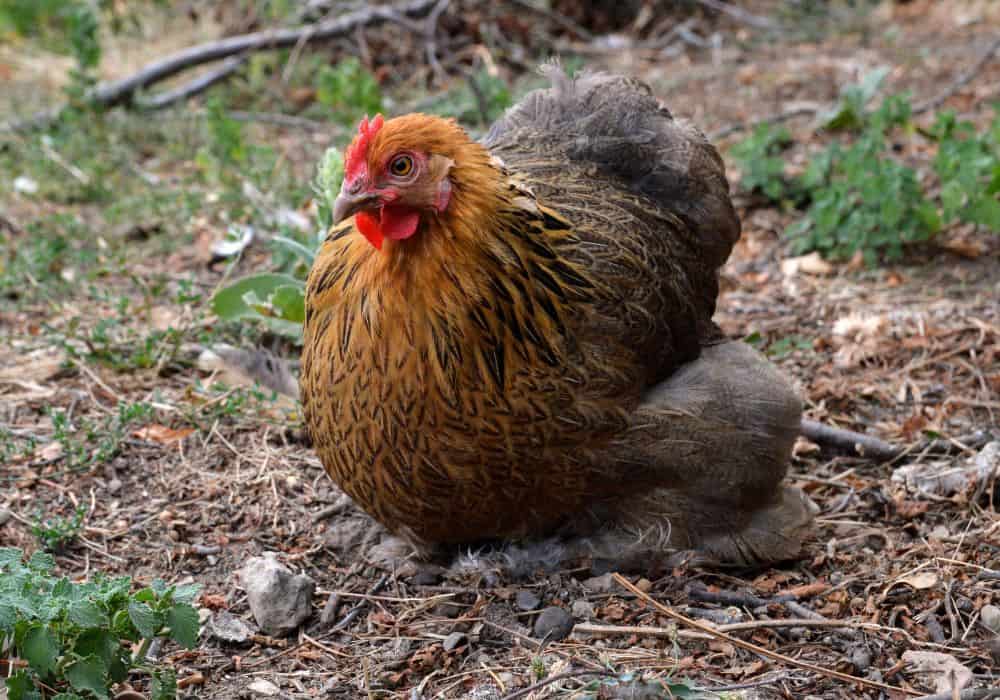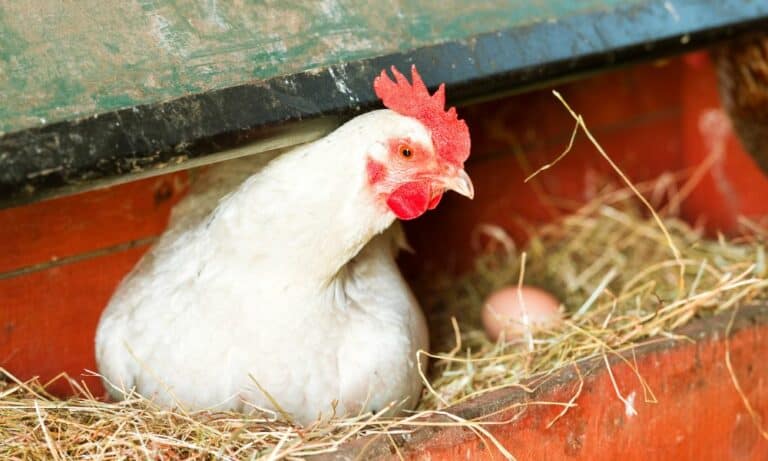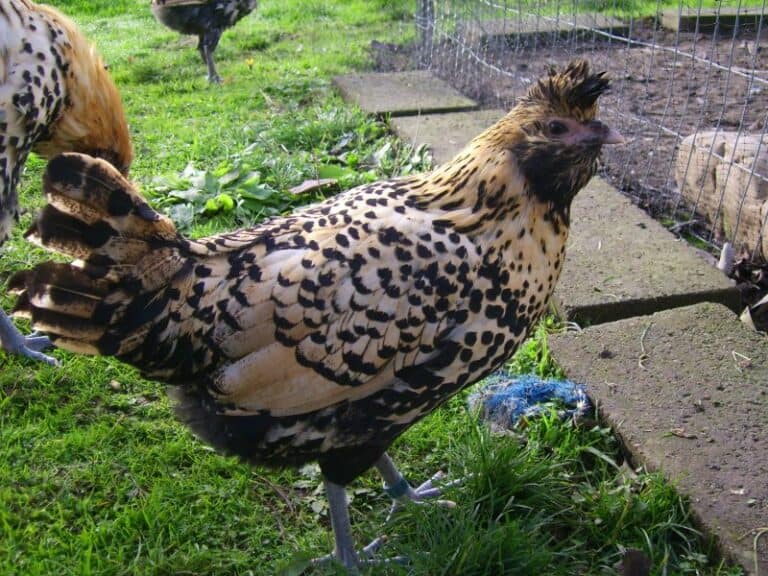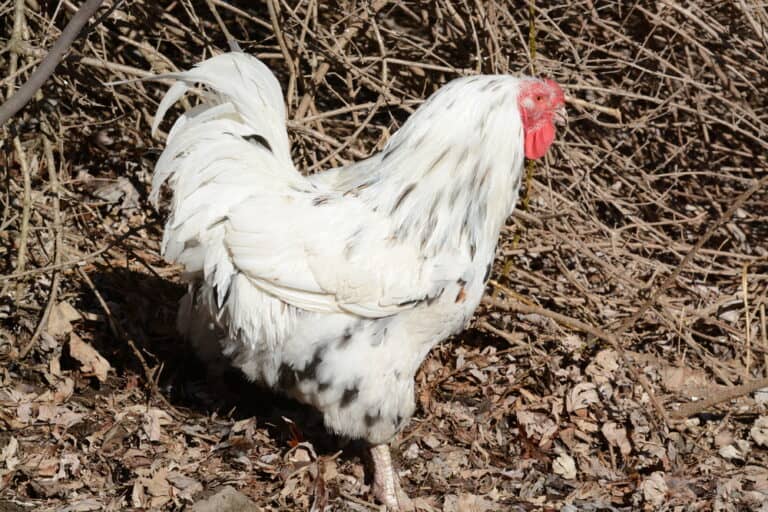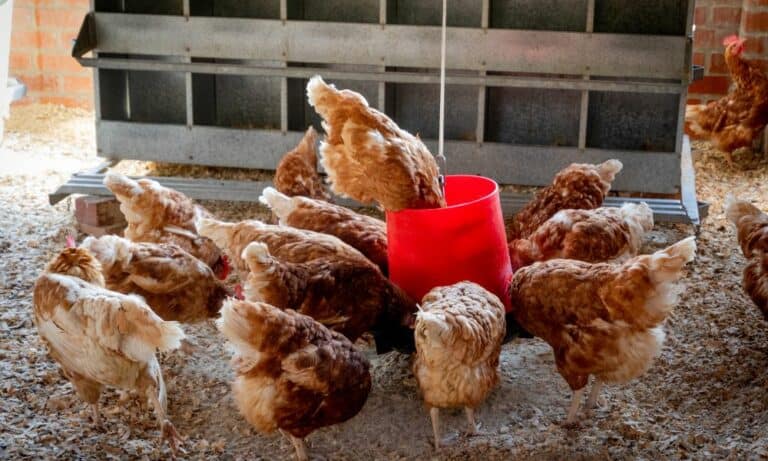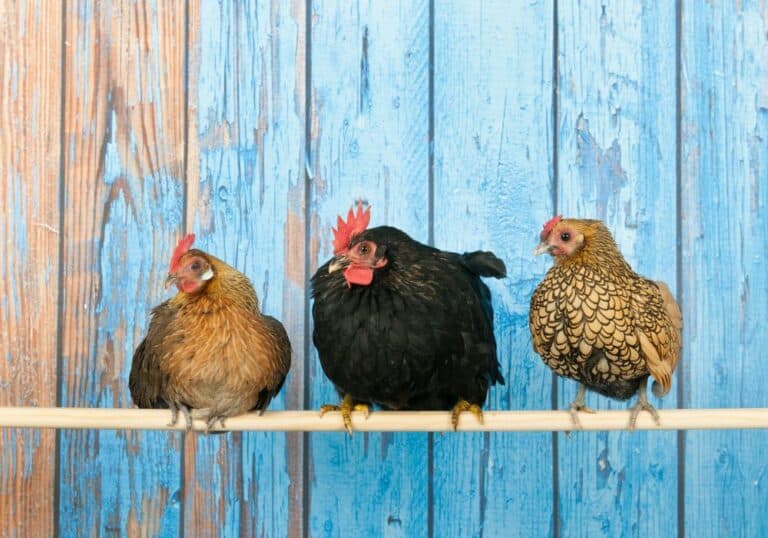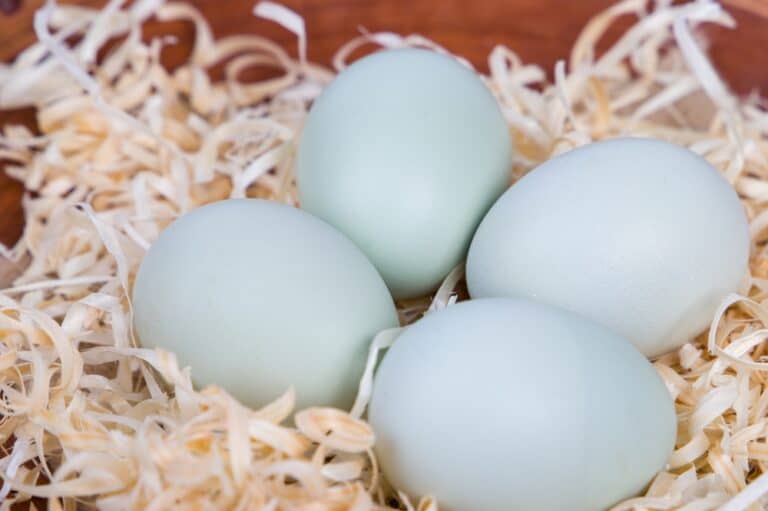The recent surge in interest in chickens mainly focuses on performance breeds, but few can resist the charm of fluffballs like the Pekin Chicken.
The Pekin chicken is a charismatic breed better suited to companionship than commercial farming. They only lay a maximum of 200 eggs per year, but they would much rather spend their time raising young chickens and forming friendships with their caretakers.
There’s more to these chickens than a sweet face. Keep reading to learn more about their history and care requirements, as well as some common health issues you should watch for.
Pekin Chicken Origin
Pekin Chickens, also known as Pekin Bantams or Cochin Bantams (in the United States), have a bit of a muddled history. We know that the first Pekins came from China, but the story of how they got there changes depending on who you talk to.
One story explains that during the Second Opium War some English and French Soldiers broke into the Summer Palace in Peking (now Beijing), captured the emperor of China, and stole several items from his private collection.
Buff Pekin Chickens were among the loot, making their way back to England and eventually kicking off the breed as we know it today.
A less adventurous story is that the Pekin Bantam Chickens were simply sent home by English soldiers with the intent to gift them to Queen Victoria. While there’s no record of this, the queen was known for her interest in chickens, and it’s a plausible story.
Regardless of how they got there, the Pekin breed got its start in England around this time. The original breeding stock from China contributed to breed as it is known today, while time has cultivated a number of stunning colors.
Is the Pekin Chicken Related to the Cochin?
While Europeans call the breed a Pekin Chicken, those across the ocean refer to them as Cochin Bantams.
In reality, the Pekin is a true bantam. This means that the breed is small on its own and not just a miniature version of a larger breed.
The similar appearance between the Cochin and Pekin are more likely due to the fact that they developed in the same area at the same time. Pekins are simply smaller in size, and a closer look at their genetics reveals no trace of Cochins down the line.
Pekin Chicken Appearance
There are a few key characteristics that make the Pekin chicken stand out.
To start, Pekin chickens have a smaller stature than most, and their posture doesn’t make them look any taller. While Pekin roosters keep their head up and on lookout, the Pekin hen stays closer to the ground and keeps her face around tail level.
Pekin chickens have soft feathers covering their entire body, including their feet. As if this weren’t enough, they also have elaborate tail feathers that create another fluffy ball at their rump. Waddling around on their short legs only makes this tuft of feathers appear more voluptuous.
Frizzle Pekins look permanently stressed, and their longer feathers curve upwards instead of laying flat on the body.
Pekin Chickens are an expressive breed, and their large reddish bay eyes are part of their charm. They have a reddish-pink single comb and wattle, as well as red earlobes.
To stay in the standards set by the Poultry Club of Great Britain, roosters shouldn’t weigh more than 680 grams (about 1.5 lbs). Hens are slightly smaller, weighing in around 570 grams (about 1.25 lbs).
Pekin Color Varieties
Pekins come in a variety of beautiful feather patterns, including:
- Barred
- Birchen
- Buff
- Cuckoo
- Lavender
- Mottled
- Silver Partridge
The popularity of the Pekin among breeders means that there are new lines of colours in the works, although more modern variations have yet to achieve standardization.
Pekin Chicken Temperament
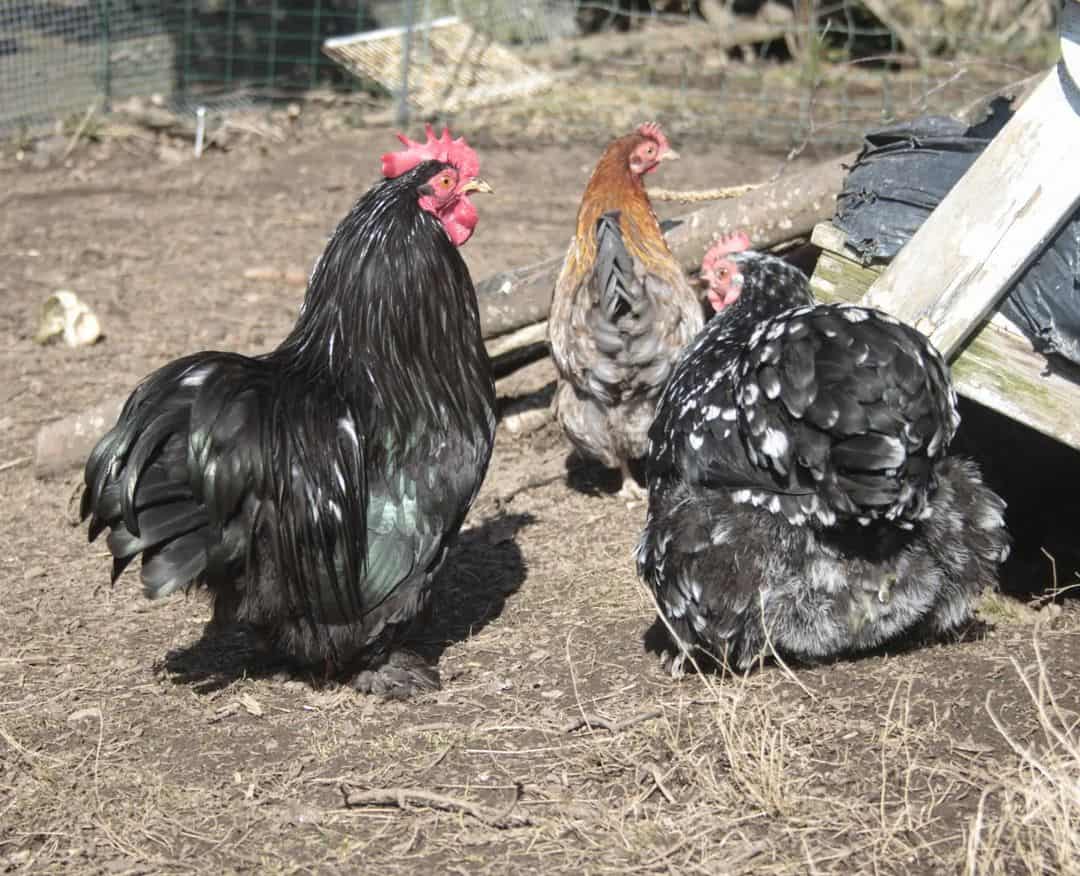
Pekin chickens are kept mostly as companions, show birds, or breeders, and their easygoing behavior sets them up for success in all areas.
Overall, the Pekin Chickens are good birds with a docile nature. They’re more interested in forging a bond with you or even your kids than they are in tearing up your garden beds.
This doesn’t mean that they’re complete pacifists. Pekin roosters will still perform their duty when the time comes, and they may be possessive of their territory and their loved ones. The males are perfect gentlemen to ladies in their flock, and they’ll put in the work foraging when needed.
Don’t let their small size trick you. Pekin Chickens can make a lot of noise, and their banter will either amuse or ostracize your neighbors. The Pekin roosters crow may not be as deep as a bigger bird’s, but it’s no less mighty.
Pekin hens would prefer to sit on eggs than pop a new one out every day, and they’re great at nurturing any young chicks you have (of nearly any species). They’re attentive mothers than can both replace your incubator and free up the time you would spend checking in on your brooders.
Pekin Chicken as Show Birds and Pets
Pekins are not the cheapest chickens you can buy, and people don’t invest in them for eggs or meat. Pekin hens only lay 2 to 4 small eggs per week (and none if they’re broody), and their smaller size is barely enough for lunch.
Instead, most Pekin owners keep them around because they’re contributing to the breed or because the birds provide endless entertainment. They’re easy to tame, and they will follow you loyally throughout your day.
Because Pekins are so great with kids, they’re a great introduction breed for backyard flocks tended by those with small children.
Pekin Chicken Care Requirements
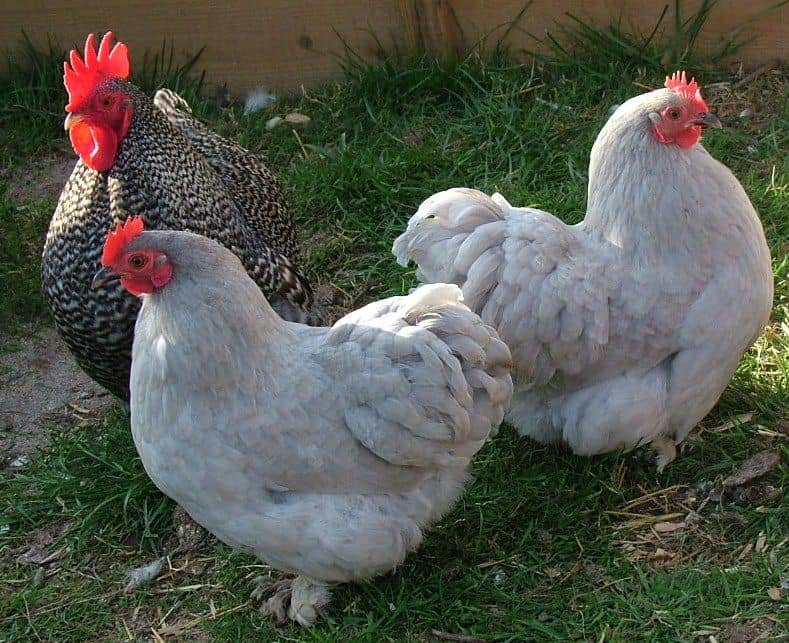
Pekin chickens don’t need much to be happy and healthy, but they’re not a breed you can cut loose and forget about.
Before you take them under your wing, make sure you have a local veterinarian to keep your chickens dewormed and provide care when needed. Even the most stress-free chicken can become ill, and having a support plan in place is essential for acting fast.
While they’re easy to care for, Pekin chickens aren’t known for their hardiness. You must provide proper nutrition and living conditions to give them the best life possible.
Feeding Pekin Chickens
The biggest issue when feeding Pekin chickens is making sure they don’t become overweight.
This starts with feeding them an age-appropriate diet. Pekin chicks will benefit from the high protein in starter crumbled, while mature hens need more calcium offered from a layer diet or through supplements like cuttlebone or oyster shells.
Pekin chickens are not as active as other breeds, making it difficult for them to shave off any extra grams they accumulate. This is why it’s so important to limit any treats you feed them. Even fresh fruits and vegetables can do more harm than good if they’re fed too often.
Sheltering Pekin Chickens
Pekin chickens have similar housing requirements to other breeds, but it’s even more important to keep them dry and far from predators.
The long feathers on the Pekin actually do more harm than good when it comes to keeping the Pekin warm. Dry cold isn’t a problem, but their plumage will soak up any moisture and increase the risk of frostbite on the bird.
This usually occurs as their soft leg features gather up dew or mud as they walk around. Trimming the features short can help, but it’s best to keep their environment as dry as possible.
Pekins can free-range just fine, and they won’t be scared to stand up against a predator if needed, but their chances of survival in this situation are slim. They’re easy for birds of prey to snatch up, and their diminutive size won’t do much to scare off beasts on the ground.
We suggest keeping Pekin chickens in a covered run when there’s no one around to protect them. Coops, runs, and fences should be inspected often to make sure there are no weak spots, or you could easily lose your entire flock in a single night.
Health Concerns for Pekin Chickens
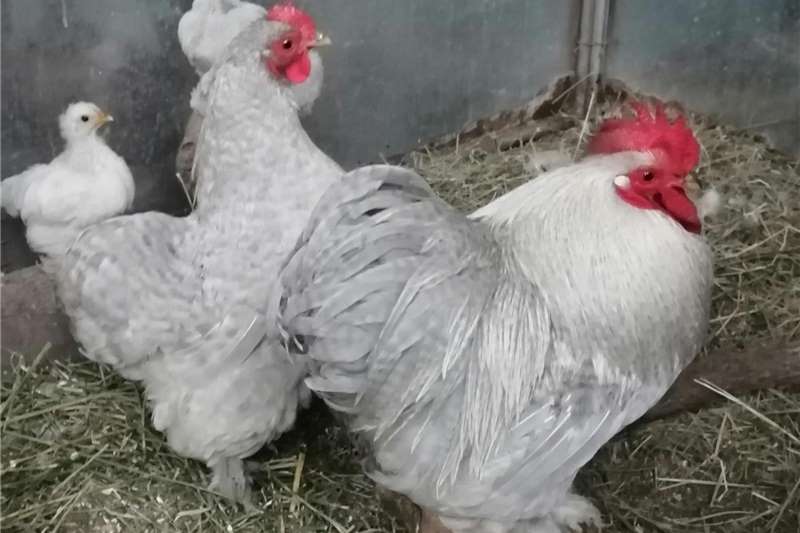
Apart from worms, lice, and mites, there are two major health concerns for the Pekin breed.
The first, infectious coryza, is a bacterial disease that targets their sensitive respiratory system. This usually pops up before they reach maturity, and the affected juveniles may bear symptoms such as discharge, swelling on their face, loss of appetite, or diarrhea.
At-home treatments include isolating the bird with fresh water, but a veterinarian should prescribe antibiotics to help them overcome the infection.
The second common issue in Pekin chickens is gapes, and it occurs when a nematode roundworm lodges itself in the bird’s windpipe. The chickens will stop eating and become lethargic, losing their voice until the issue is dealt with.
Check out the meager sound of this Wyandotte with gapes:
Separating the affected Pekin until a veterinarian can oversee the deworming procedure is essential for isolating the issue. The chicken will need regular monitoring to make sure the dying and dislodged worms do not cut off their air.
While there’s no sure way to prevent these issues, keeping them as well-fed and stress free as possible will boost their immune response and give them a better chance of survival in any situation.
Conclusion
The Pekin chicken is a beautiful, entertaining breed that fits nicely in most background flocks. They demand more pruning and attention than other types of chickens, but all of this care goes into building deep relationships with the charming birds.
While they’re not the hardiest creatures out there, it doesn’t take much to ensure their safety and well-being. Usually, watching their diet and beefing up security is all it takes to ensure a long, healthy life.
Are you thinking about adding Pekin chickens to your flock? Let us know how we can help you make that decision.

